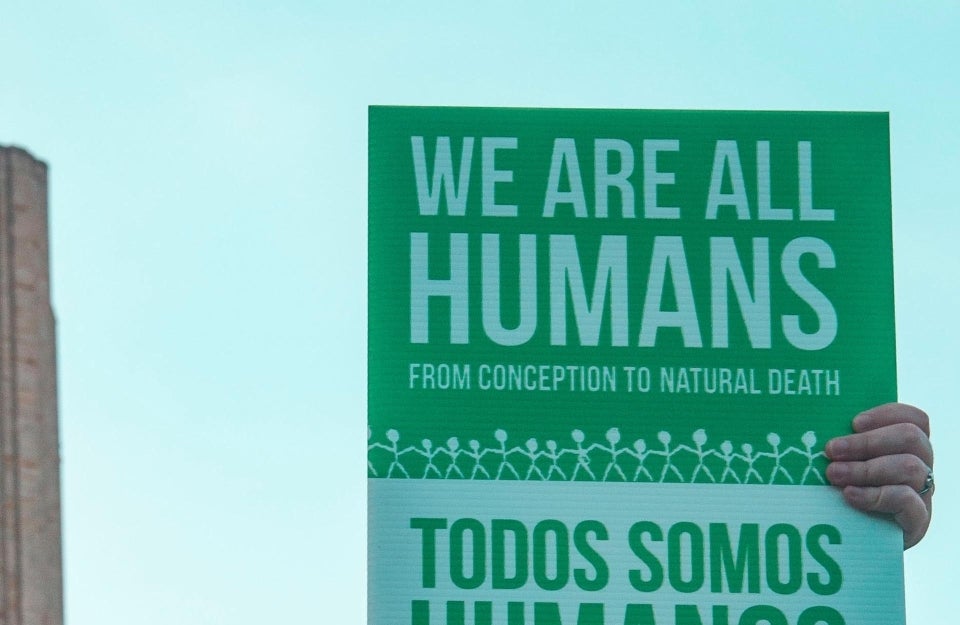In the Brain, Dislike and Dehumanization Are Not the Same Thing
Processed by separate regions of the brain, dehumanization and dislike may be different psychological processes.

Photo Credit: Maria Oswalt / Unsplash
Over the last week, the news has brought us difficult images and sounds: Migrant and refugee children huddled in steel cages. Children and parents wailing as they are torn apart by American agents. Detention buses filled with infant car seats.
The majority of Americans oppose the policy of separating families at the border, but a substantial percentage have no problem with it. “How is that possible?” many wonder. “These are human beings.”
Researchers who study dehumanization, however, know that not all people see it that way. It is very common for people around the world to look at entire groups of people — Muslims, Native populations, Roma, Africans, or Mexican immigrants — as not fully human.
Conventional wisdom has long assumed that talking about people in dehumanizing terms — as dogs or pigs or pests — was simply an extreme expression of dislike for them. But according to new research published in the Journal of Experimental Psychology, dehumanization and dislike are processed by two completely separate regions of the brain, which suggests that they may be two different psychological processes.
For example, many people would say that children and puppies don’t have a fully realized human mind, but they are still lovable. On the other hand, it is possible to dislike an arrogant colleague while still believing that he or she is fully human.
“When people are dehumanizing others, they are mobilizing different brain regions than when they are registering their dislike,” explains co-lead author Emile Bruneau, Ph.D., director of the Peace and Conflict Neuroscience Lab at the University of Pennsylvania’s Annenberg School for Communication and lead scientist at Beyond Conflict Innovation Lab. “Brain regions sensitive to dehumanizing other groups were not sensitive to dislike. And brain regions activated when registering dislike for those same groups were not activated when thinking about how human those groups are.”
In the experiment, the researchers used functional magnetic resonance imaging (fMRI) to observe participants’ brain activity as they rated how they felt about 10 different groups. They ranged from high status groups like Americans, Europeans, and surgeons to lower status groups like Muslims, Roma, and the homeless, and also included animals, like puppies and rats.
“Dislike” was measured on a “feeling thermometer” scale, which asks people to rate how ‘cold’ or ‘warm’ they feel towards the target group, and dehumanization was measured by asking participants to place the target group where they think they belong on the popular “Ascent of Man” scale depicting stages of evolution. Previous research from Bruneau and co-lead author Nour Kteily of Northwestern University found that while researchers had long been measuring dehumanization implicitly, believing that few would openly admit they felt other people weren’t fully human, in fact many people have no problem blatantly saying so.
In any real-life situation with high levels of dehumanization, the stakes are high, as it is a strong predictor of aggressive outcomes, such as support for torture, reluctance to provide aid to victims of violence, support for armed conflict, and support for hostile policies. But knowing that dislike and dehumanization are two separate factors can help understand — and then address — people’s viewpoints.
The belief that the American government is justified in separating migrant or refugee children from their parents, explains Bruneau, isn’t necessarily a values-driven belief or one infused with hatred. It can be a cold, rational evaluation: these children are just less human, and less deserving of moral concern. In fact, removal of children from families has a long tradition, and the impetus is often not anchored in dislike or hatred. In fact, these removals are justified in some people’s minds as paternalistic care.
“High dehumanization and low prejudice is the perfect profile of paternalism,” explains Bruneau. “Some Americans may feel we’re doing good in taking these poor immigrant children away from their lawless parents.”
“The whole reason I study dehumanization is that I’m interested in intervening to reduce intergroup hostility,” explains Bruneau. “Understanding there’s a fundamental difference between dehumanization and dislike is academically interesting, but more importantly, it may prove practically useful.”
Many interventions to try and reduce intergroup conflict — between groups like Israelis and Palestinians, Blacks and Whites in South Africa, or Muslim refugees and Westerners — focus on getting people to like each other more. That, Bruneau says, is very difficult.
It may be easier to get people to see each other as human — which is, after all, an objective truth. At the very least, knowing that dehumanization and dislike are independent roads to intergroup hostility can increase the number of avenues to peace and reconciliation.
“Denying Humanity: The Distinct Neural Correlates of Blatant Dehumanization” was authored by Emile Bruneau (University of Pennsylvania), Nour Kteily (Northwestern University), Nir Jacoby (Massachusetts Institute of Technology and Columbia University), and Rebecca Saxe (Massachusetts Institute of Technology).



